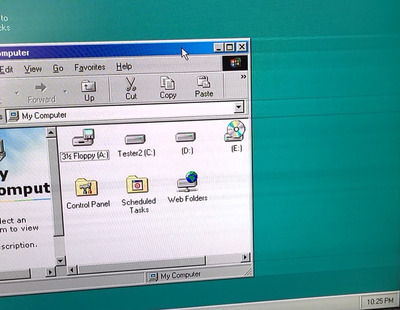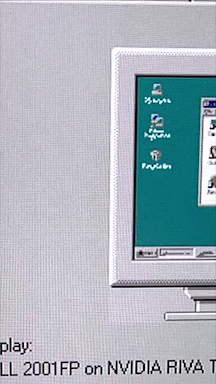First post, by Ozzuneoj
- Rank
- l33t
I've seen issues like these for years, but I'd like to finally get to the bottom of what causes these problems.
First off, what causes this kind of ghosting that moves around with whatever is on screen?
What component is usually responsible for this kind of problem? Specifically on something like a TNT2... but also, in general on other cards.
Next... this one is really tough to record, and even tougher to get it to survive the conversion process when uploading it online. If you sit back a bit, it is visible in this gif as a repeating horizontal wave going from left to right. On this particular card it is really only visible at 800x600. For some reason, the card works fine at 1600x1200 at 60Hz, with only very very subtle distortion at 1024x768 or 640x480. But at 800x600 it's really distracting. The appearance changes a bit with different refresh rates, but it doesn't go away. Sometimes it looks more random and scattered, but in this case it's pretty clearly going from left to right.
What causes that?
Also, these were taken on a Dell 2001FP (obviously) using a standard VGA cable. The two artifacts were on different cards. The first was an AGP TNT2 M64, the second was on a PCI TNT2 M64. Other identical cards do not exhibit these problems, so these are defects with these particular cards.
I have also tried hitting the auto adjust button on my monitor and it doesn't make either of these go away.
(Pro tip: A large number of visual artifacts I've seen in DOS or in Windows seem to just be scaling issues with certain LCD monitors. If your display has an auto adjust or auto alignment button, there's a good chance it will clear up any visual problems your having, like swimming\shimmering text in DOS mode or strange dithered patterns in Windows.)
Now for some blitting from the back buffer.



